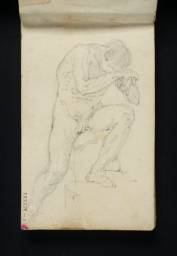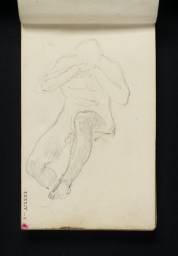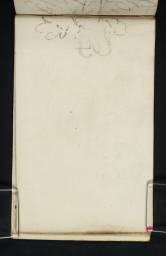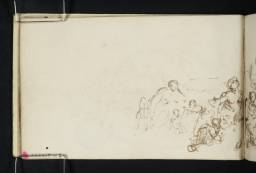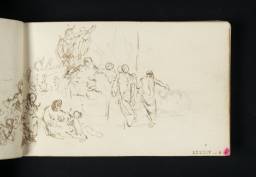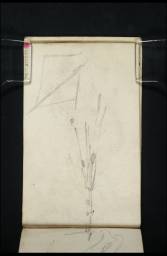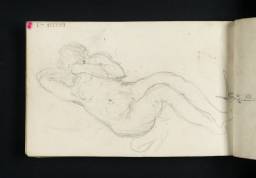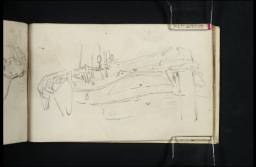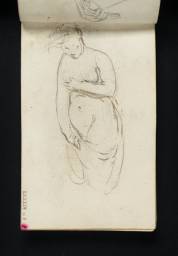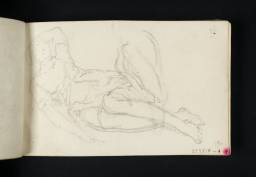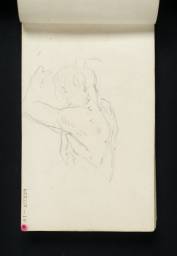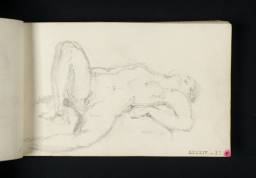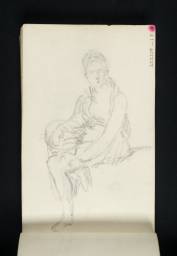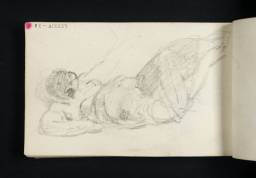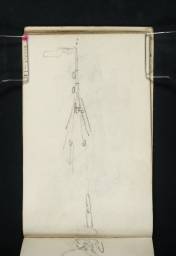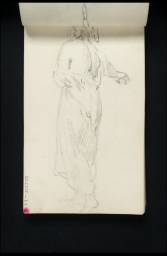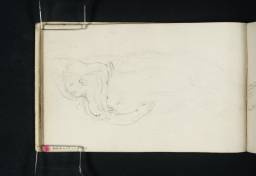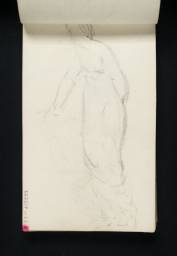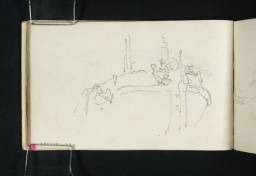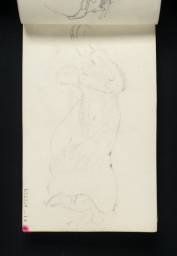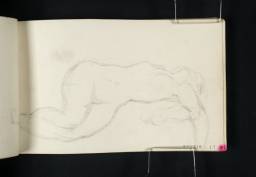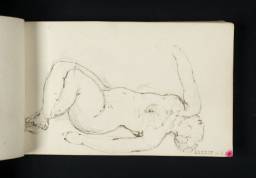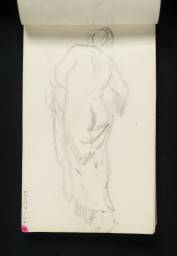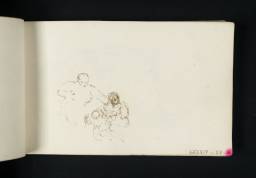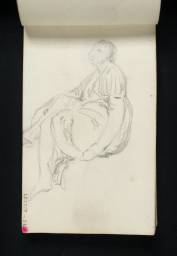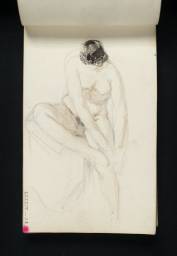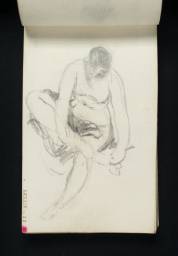Turner Bequest LXXXIV
Small pocket book, gilt-edged, without original cover; now bound in modern blue-grey boards with two front and two rear flyleaves
68 leaves of white wove paper made on a single-faced mould
Approximate page size 73 x 119 mm
Made by John Buttanshaw, Hamptons Mill, West Peckham, Kent, and watermarked ‘I BUTTw | 1798’
68 leaves of white wove paper made on a single-faced mould
Approximate page size 73 x 119 mm
Made by John Buttanshaw, Hamptons Mill, West Peckham, Kent, and watermarked ‘I BUTTw | 1798’
Accepted by the nation as part of the Turner Bequest 1856
Exhibition history
References
This book was used during Turner’s visits to the Royal Academy Life Class, and probably in more intimate domestic circumstances, for studies of the nude and other figures. There are also several sketches of a barge, and three lists of commissions for pictures and their prices. Finberg dated the book to approximately 1804, without explanation, but it was probably in use earlier and over a period of years.
Most of the sketches are of the nude or lightly draped figure, in several cases associated with historical subjects or compositions but usually from life and predominantly female. The majority are single figures. A few are very perfunctory indeed, most are relatively slight, and they are mainly made in pencil, occasionally with additions in ink; only five are coloured. Few require individual comment. As usual, Turner turned the book to different angles to make the sketches. Their format is reflected in the dimensions given for individual leaves.
Turner was a regular visitor to the Academy Life Class from his early days as a student and for much of his life thereafter. His drawings of the nude in the Turner Bequest, including those in the present sketchbook, are summarised in Ian Warrell’s checklist of ‘erotic sketches’, which includes both objective life studies and more physically explicit renderings of the body. The sometimes fine line between these types may account for the omission of this book with other groups of potentially ‘erotic’ material from the 1854 Executors’ schedule of the collection. Whether this was accidental or deliberate is discussed by Warrell, who finds possible grounds for an outbreak of prudery on the part of the Executors on folios 13 verso or 36 (D05184, D05210), where the model fondles her vagina or splays her legs.
The nude studies cannot be dated exactly and aside from the earlier watermark, the only real evidence for dating the use of the book comes from the lists of commissioned works on folios 65 verso, 66 verso and 68 verso (D05240, D05242 and D05244). However, the identifiable works cover a span from about 1800 to 1807 and it is impossible to know when they were noted in the book and whether they were past, current or future projects. One subject derived from Turner’s visit to Scotland in 1801, several more from his Swiss tour the following year. That the book was in use before 1804 is evident from the fact that one picture is said to be ‘with Duke of Bridgewater’, who died on 8 March 1803.
Technical notes
How to cite
David Blayney Brown, ‘Academies sketchbook c.1800–7’, sketchbook, November 2004, in David Blayney Brown (ed.), J.M.W. Turner: Sketchbooks, Drawings and Watercolours, Tate Research Publication, April 2016, https://www

